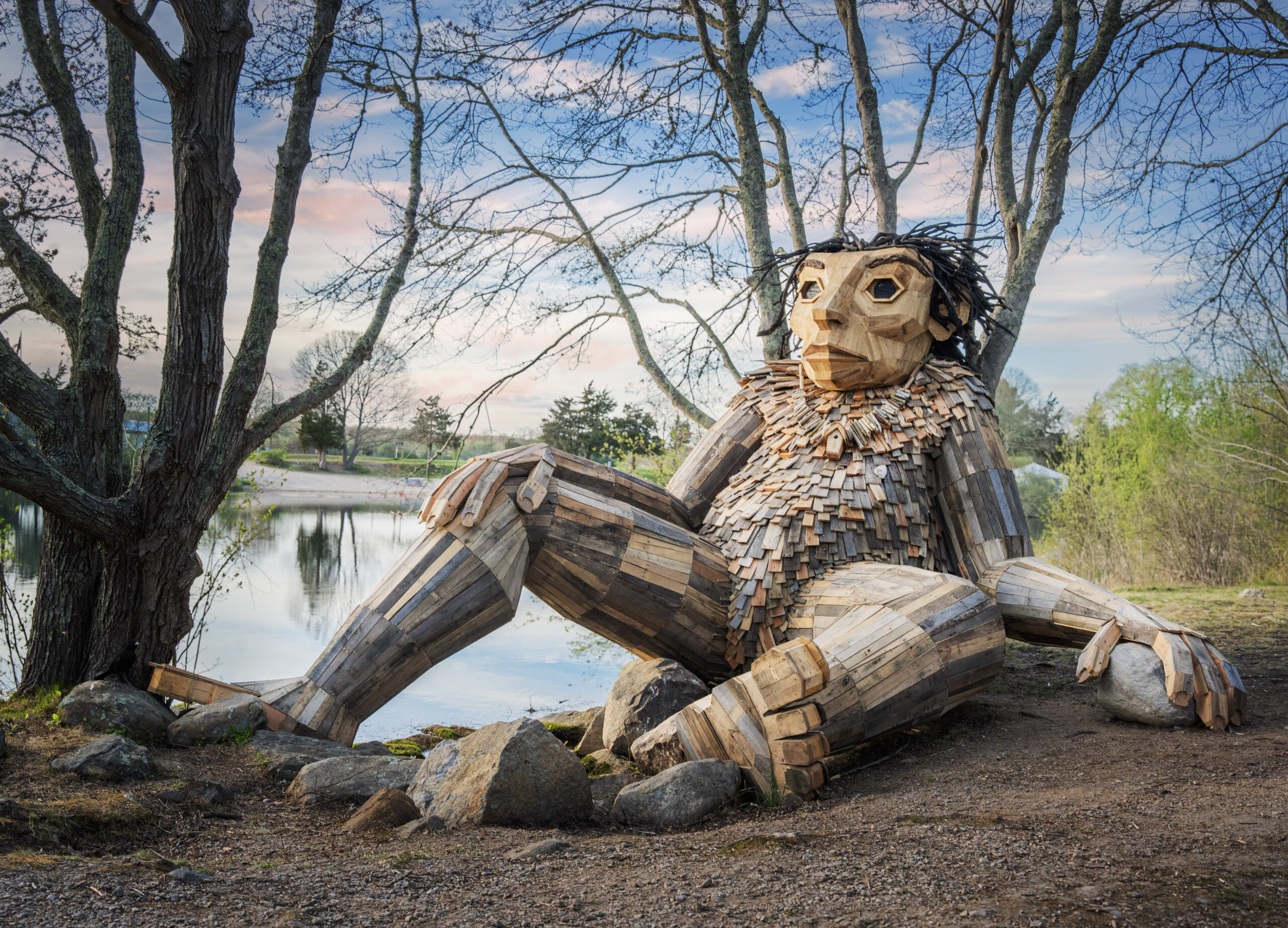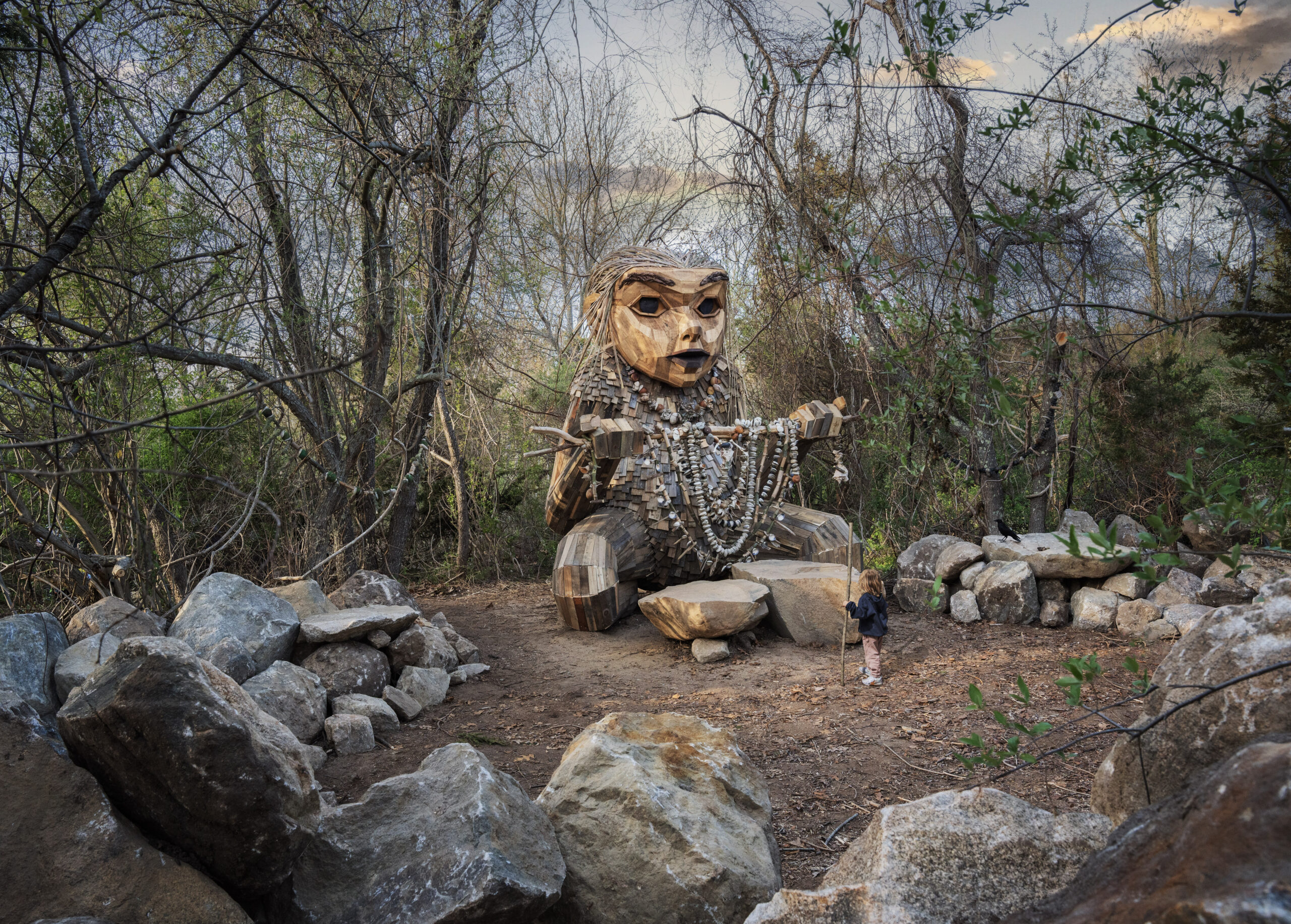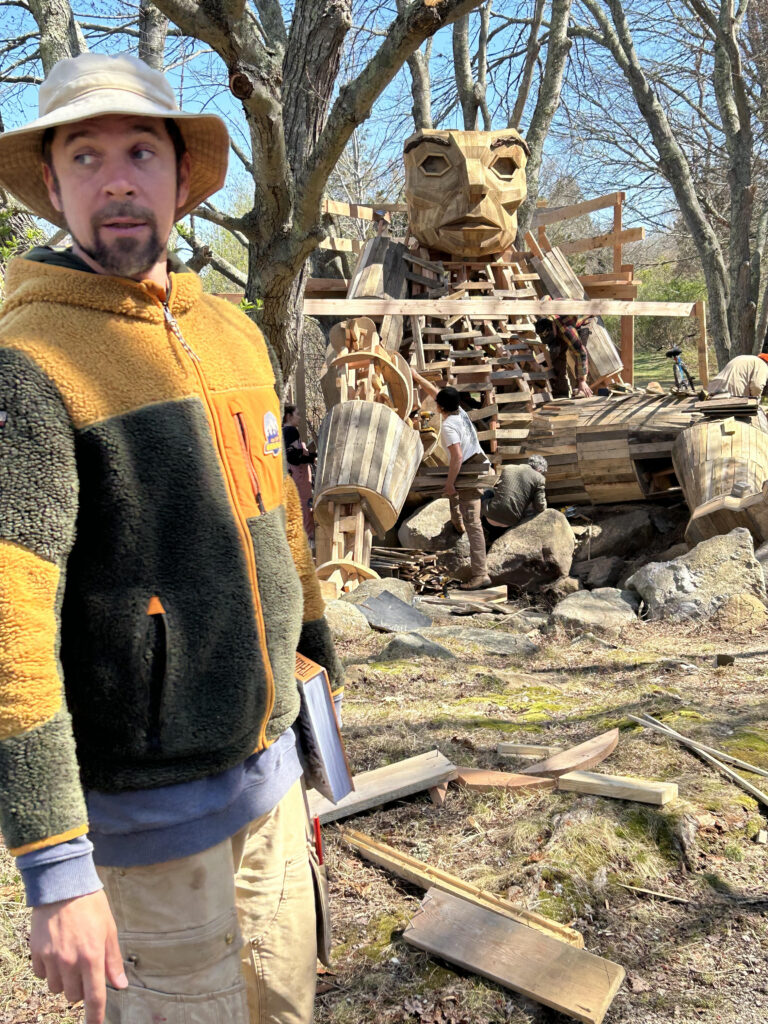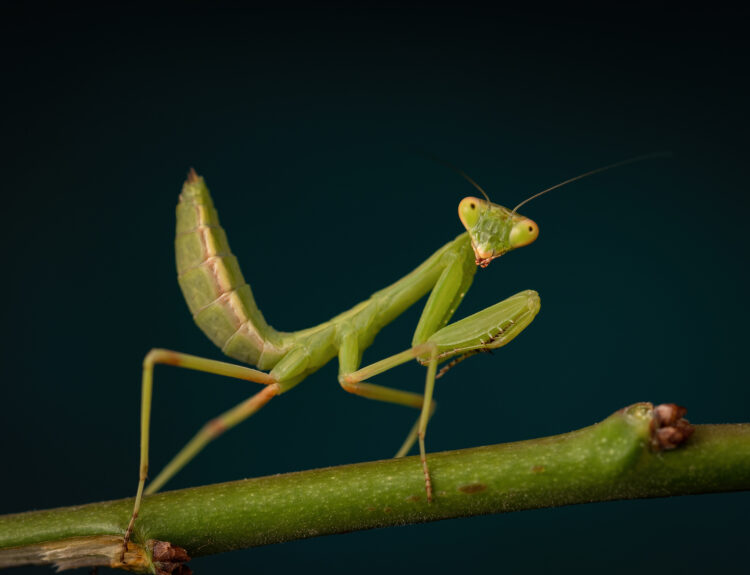Thomas Dambo creates troll artworks across the globe to practice and preach the value of using trash and discarded materials to create things of beauty and use
CHARLESTOWN — Two massive creatures from European folklore have moved permanently into Ninigret Park. At 16 feet tall and made of recycled wood, the two trolls, lounging in wooded nooks, come with a message: be kind to nature and re-use everything.
The trolls are the work of Danish artist Thomas Dambo, who in the last ten years has built and installed about 130 variations of the whimsical creatures in public places on five continents.
Almost 20 years ago, Dambo, 45, was a successful hip-hop performer and graffiti artist in Denmark, but he found himself getting queasy watching his graffiti-making friends’ increasing entanglements with police. Making public art? He was all for it. Trouble with the law? Not so much.
A lifelong junk collector and tinkerer, Dambo eased out of the graffiti-making scene and began building colorful bird houses from scrap wood. Unlike graffiti, his bright bird houses were public art that was welcomed and solicited, growing to 1,000 of them in public places in Denmark. He enrolled in design school and kept building.
A turning point arrived in 2014, when Dambo built his first two wooden trolls for a music festival. Since then, he has built more than 12 dozen trolls in locations around the world, including in many U.S. states. The trolls in Charlestown’s Ninigret Park are not yet named, but they already have a backstory involving giant stones and clues to a treasure hunt. They are open to the public starting this month, according to South County Tourism Council, which had a major role in bringing the project to Rhode Island. An additional four trolls will make their homes in other places in Rhode Island within a year.
Dambo and his crew of 25 people along with 2,000 local volunteers (over the 10 years of the project) have built the fanciful creatures entirely of scrap wood. They are huge – about three to five times the height of a man, and each has a name and a theme. Some have clues to nature-oriented treasure hunts.

Dambo and his wife and manager, Alexa, were in Charlestown this spring, overseeing their paid crew and some volunteers building the trolls, and preparing for an upcoming month in Minnesota, where another troll creation will come to life this summer.
Speaking to a gathering of guests at Ninigret, Dambo emphasized that the trolls are made entirely from discarded scrap wood that he salvages in the places where the trolls are being built. (The exception is the trolls’ heads, which are built from salvaged wood at his farm-based workshop near Copenhagen.) Much of the wood for the trolls is from discarded shipping pallets, along with parts of barns, buildings, boxes, and giant industrial spools.
At this point, the troll building project has recycled close to 300 tons of scrap wood and about 18,000 pallets.
“I am a recycling school,” Dambo declared. “I preach it; I practice it; and I bring in people to help.” He continued, “We try to do everything with the least impact on the environment. My mother told me, ‘Take only what you need.’ If we [humans] keep behaving like we are the whole world will be a dump.”
Dambo is serious about the need to recycle and re-use trash, but he is not a scold. His giant creations are fun and many of them have an unmistakable air of mischief.
Dambo’s 2023 hardcover book, “Trash, Trolls, and Treasure Hunts” opens with the story of his career and then fills 440 pages with pictures and stories of the troll projects. An index tells the names and locations of trolls, as scattered as China, South Korea, Puerto Rico, Australia, Mexico, many parts of Europe, and several American states.
The nearest trolls to Rhode Island are five giants called The Guardians of the Seeds at the Coastal Maine Botanical Gardens near Boothbay, Maine, built in 2021. The theme of the Guardians is forest preservation; each troll stands in for root, trunk, branch, leaf, or seed. Another troll is Suttetrolden Sanka, in Denmark, located next to a kindergarten and playground. He lounges on the ground dining like a Greek god on a cluster of glued-together baby pacifiers that resemble a cluster of grapes. The troll is meant to support a tradition there of hanging old pacifiers from tree branches when it is time for children to give them up.
“We can make fun, beautiful things from waste,” Dambo said. When he evaluates a finished project, one of his markers of success is the joy that volunteers take from the task. “I ask, ‘How good was the experience that I gave to people who helped me?’ ”
The theme of the two-troll exhibition at Ninigret Park is “Thunderstone,” inspired by Dambo’s visit of a few years ago, when he observed New England’s ubiquitous rocks and boulders, dragged into our farms and gardens by a glacier long ago.
A thunderstone, Dambo said, is the highest stone on the highest mountain peak. It is very durable because it has been struck by lightning so often. He said the trolls are made to celebrate stones “because they remind us of how old the world is and how big are the forces that move them.”
The Ninigret trolls are about 16 feet tall. The male troll is easy to see and walk to, on the edge of a pond. The female troll, astride a narrow path through a wooded thicket, takes a bit more effort to find and reach. A platform of flattish boulders is spread before her, just right for sitting and storytelling. In creating that more-elusive troll in the woods, Dambo said, “I thought, what would be the coolest thing to see if I were ten years old and running through the woods” and just stumbled upon the structure.

By a year from now, four more trolls of the Thunderstone project will hunker down in yet-undetermined places, possibly Providence, Block Island, or the Arcadia Management Area in South County. Each troll location will hold a clue leading to another troll or to a thunderstone at some other place in Rhode Island. There will be about 18 hidden thunderstones, “but only one will be the real thunderstone,” Dambo said. The hidden stones “will be more Xs on the map for people to go around and find. We are building these big sculptures and we are creating destinations.”
A big part of all the troll projects for Dambo is to bring in local volunteers, partly to help with the work; partly to hear his message of waste less, re-use more; and partly for pure fun. At the Coastal Maine Botanical Gardens project, he put out a notice on social media asking for help in making some necklaces for the trolls. The suggestion came back that he should use shells – a local natural resource – and the project was soon swamped with a ton of shell-necklace makers.
“My mission is to show the world that we can make beautiful things out of our trash,” Dambo wrote in his book. “I believe I do this best when I include as many people as possible.”
Out of concern for the safety of volunteers who might be at risk climbing tall ladders to the top of the trolls, Dambo designed a troll, Hanna Hallerod, in Denmark, who has a very long tail – 124 meters – that winds sinuously around her on the forest floor. The idea was to create more construction work for volunteers that would allow them to stay safely on the ground.
Dambo said he does not consider himself a troll fanatic, even though he was exposed to them at a young age, through a lullaby his mother sang, along with a nearby amusement park from his childhood and also books and stories.
“Trolls are a good vehicle to tell the stories I would like to tell,” Dambo said. Most of the stories emphasize love and care for nature, and the need to waste less and clean up after ourselves. Dambo said he thinks of his trolls as “the voice of the animals and plants.” The trolls, he said, are a form of modernized folklore.
People who love the idea of the trolls but don’t have the wherewithal to undertake a journey across five continents can explore the global project through the Trollmap on Dambo’s website. The website offers news on new trolls in 2024, which, besides Rhode Island, include Texas, Minnesota, Denmark and France. There also is a link to Dambo’s weekly Trash Talk episode on YouTube.

Like anyone concerned about environmental pollution, Dambo is horrified by plastic waste, including the microplastics that break down from many products, including clothing and textiles, and make their way to the rivers and seas. He made one large project from plastic, in Mexico City. With help from pepenadores, the people who collect and sort waste for reuse, and many others, Dambo and his team built Future Forest, a landscape of fantastical tree- and flower-like structures, out of three tons of plastic waste.
He said, though, that he would never build a structure outdoors using waste plastic because the act of cutting and sawing plastic would create something like plastic sawdust – a very destructive form of microplastic. Any work manipulating plastic would have to be done in an indoor space that could be carefully cleaned, Dambo said.
Katie Hey, marketing manager for Coastal Maine Botanical Gardens, where the The Guardians of the Seeds reside, said of the enormous creatures “it is impossible not to feel excited by their presence because of the sheer size and because of the way they blend into nature.”
The Guardians “tell a story about respect for nature,” Hey said. A placard at each troll describes its name and purpose in nature, and includes a letter of the alphabet. Visitors may use neat little troll hunt sheets to tally the letters, which are a clue to another location with a poem by Dambo that begins, “Somewhere between the mountains and the rocky coast lays a forest pristine green forgotten by most, and deep in the forest is a secret place with ten golden seeds at the end of the maze…” At the end of the treasure hunt, guests receive a packet of native Maine bee balm seeds.
Hey said of the trolls, “People are mesmerized by them.”





